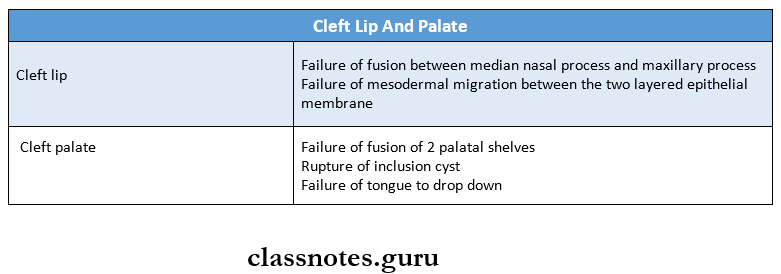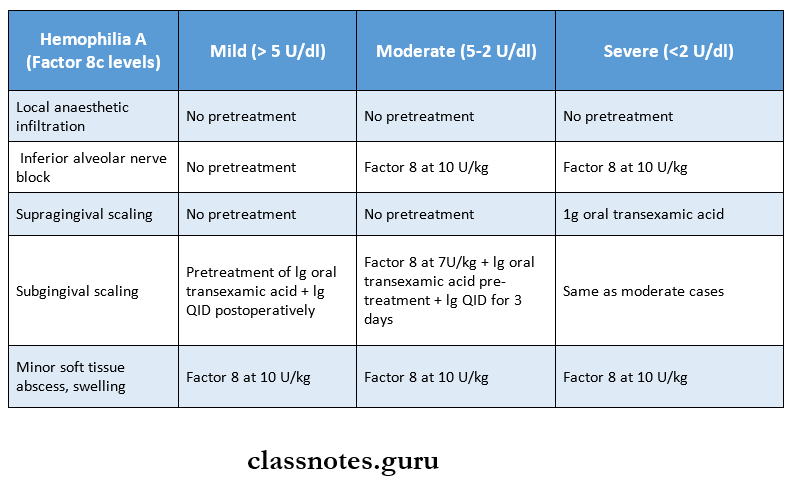Dental Care For The Special Child Important Notes
1. Handicap child
Handicap person is one who over an appreciable period is prevented by physical or mental conditions from full participation in the normal activities of their age groups including those of a social, recreational, educational, and vocational nature.
2. Classification of handicaps By Nowak
- Physically handicapped
- Mentally handicapped
- Congenital defects
- Convulsive disorders
- Communication disorders
- Systemic disorders
- Metabolic disorders
- Osseous disorders
- Malignant disorders
Read And Learn More: Pedodontics Short Essays Question And Answers
3. Cerebral palsy
- It is a non-progressive lesion which occurs in the developing brain before, during or after birth
- Its classification is mainly of the anatomical and physiological type

4. Cleft lip and palate

5. Clinical features of cleft lip and palate
- Hypoplastic maxilla
- Shallow gingivo labial sulcus
- Nose deformity
- Hypoplastic teeth
- Sup [ernumerary teeth
- Congenitally missing teeth
- Geminated, fused, conical teeth
- Feeding difficulties
- Posterior crossbite
6. Rule of 10 for cleft management
Timing of cleft lip repair should be when hemoglobin is 10 gm%, age 10 weeks, weight 10 lbs, and total leukocyte count less than 10,000 per mm3
Dental Care For The Special Child Long Essays
Question 1. Define handicap. Classify handicapping conditions. Describe pedodontic management of orofacial cleft patients, management of hemophilia, and management of Cerebral palsy.
Answer:
Definition: Handicap person is one who over an appreciable period is prevented by physical or mental conditions from full participation in the normal activities of their age groups including those of a social, recreational, educational, and vocational nature.
Handicapping conditions Classification:
- By Nowak
- Physically handicapped
- Mentally handicapped
- Congenital defects
- Convulsive disorders
- Communication disorders
- Systemic disorders
- Metabolic disorders
- Osseous disorders
- Malignant disorders
Management Of Cleft Patients:
1. At Birth:
- Fabricate feeding plate
- Pre-surgical orthopedics to prevent the collapse of dental arches
2. 3-5 months:
- Lip repair
- Teeth alignment
- Palatal expansion
3. 12 months:
- Speech therapy
- Palatal repair
- Hearing repair
4. 2-6 years:
- Caries prevention
- Restorative care
5. 6-7 years:
- Early orthodontic intervention
- Removal of supernumerary teeth
- Correction of crossbite
6. 8 years:
- Bone grafting procedure
- Relieve crowding and ratiocination of interiors
7. 9 years: Bone graft alveolar cleft
8. 10-12 years: Preventive measures
9. 12-15 years:
- Final orthodontic treatment
- Review speech therapy
Management Of Hemophilia:
- Examine the hemostatic levels
- Various tests are carried out such as
- Bleeding time
- Clotting time
- Prothrombin time
Protocol:

Management Of Cerebral Palsy:
- Take a thorough medical and dental history
- Maintain a calm and friendly environment
- Treat the patient in the wheel chair if possible
- Stabilize the patient’s head throughout the procedure
- Elevate the patient’s back
- Use physical restraints
- Use of mouth props and finger splints
- Avoid lights and noises
- Avoid gag reflex
- Use of rubber dam
- Use of Gauze shields
- Premedication
- General anesthesia as a last resort
- Preventive measures
Dental Care For The Special Child Short Essays
Question 1. Dental Management of Von-Willebran D disease.
Answer:
Question 2. Autism.
Answer:
It is a severely incapacitating disturbance of mental and emotional development that causes problems in learning, communicating, and relating to others
Autism Etiology:
- Organic brain damage
- Lack of environmental stimulation
- Defective metabolic processes
Autism Features:
- Poor muscle tone
- Poor coordination
- Drooling of saliva
- Epilepsy
- Preference to soft and sweetened diet
- Increase caries index
- Children tend to pouch food
- Child shows tantrums
- Experience extreme loneliness
- Mutism
- Language disturbance
- Mental retardation
Autism Management:
- Use of tell show do technique and positive reinforcement
- Pre-operative sedation with muscle relaxants and nitrous oxide-oxygen analgesia
- Psychotherapy
- Family Counseling
- Use of papoose board or pedi wrap as physical restraints
Question 3. Oral hygiene measures in handicapped children.
Answer:
- Home dental care for handicapped children should begin in infancy
- The dentist should instruct the parents to gently cleanse the teeth daily with a soft cloth or finger brush or an infant toothbrush
- For older children who are unwilling or physically unable to cooperate, the dentist should teach the parent or guardian correct toothbrushing techniques
- If a child is institutionalized, the staff should be instructed in the proper dental care regimen for the child
- A soft multi-tufted nylon brush should be used
- A powered toothbrush will be helpful
- Mouthrinses can be used
- Modification on the brush handle may be necessary
Question 4. Cerebral palsy.
Answer:
- Cerebral palsy is the most severely handicapping condition affecting childhood
- It is a group os non-progressive disorders resulting from the malfunction of the motor centers and pathways of the brains
- Characterized by paralysis, weakness, incoordination or other aberrations of motor function
Cerebral palsy Types:
- Spasticity
- Athetosis
- Ataxia
- Rigidity
- Tremors
Cerebral palsy Dental Problems:
- Dental caries
- Poor oral hygiene
- Periodontal diseases
- Malocclusions
- Bruxism
- Decreased vertical dimensions
- TMJ disorders
- Trauma especially in the maxillary anterior
Cerebral palsy Treatment:
- Maintain a calm, friendly, and professional atmosphere
- Thorough medical and dental history should be noted
- The patient’s head should be stabilized throughout the procedure
- Use physical restraints
- Avoid abrupt movements, lights, and noises to minimize reflex reactions
- Local anesthesia can be used
- Rubber dam used to protect the working area from hyper-active tongue movement
- Gauze shields are used during extraction to avoid tooth aspiration
- Premedication can be used to reduce hypertonicity
- General anesthesia should be used as a last resort
Dental Care For The Special Child Short Question And Answers
Question 1. Hank’s Balanced salt solution/storage media for avulsed teeth.
Answer:
1. Water: Least desirable because of hypotonic environment causes rapid cell lysis
2. Saliva:
- Not ideal
- Has incompatible osmolality, pH, and the presence of bacteria
3. Milk:
- Best media
- pH and osmolality is compatible to the vitality of PDL cells
4. Cell culture media: Not readily available
5. Hanks balanced salt solution (HBSS): Contains a pH-preserving fluid, and trauma-reducing suspension
Dental Care For The Special Child Viva Voce
- Incidence of cleft lip alone – 25%
- Incidence of cleft palate alone – 25%
- Cleft lip and palate together – 50%
- Combined cleft lip and palate is more common in males
- Isolated cleft palate is more common in females
- Unilateral cleft are more common than bilateral
- Rule of 10 is a guide for the timings of cleft lip repair
- IQ score in Down’s syndrome- 25-50
- IQ score in autism-50-70
- 30% of autism may develop epilepsy
- Congenital heart disease are found in 50% of Down syndrome patients
